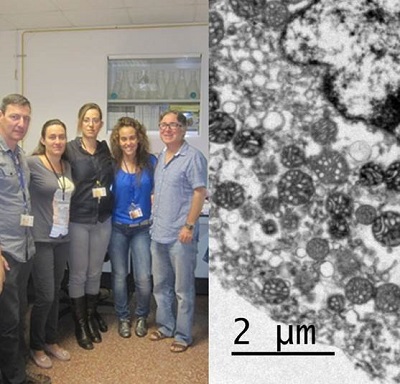Multiple sclerosis drug FTY-720 toxicity is mediated by the heterotypic fusion of organelles in neuroendocrine cells
10 de diciembre de 2019
Article - Published: 05 December 2019
"Multiple sclerosis drug FTY-720 toxicity is mediated by the heterotypic fusion of organelles in neuroendocrine cells." Yolanda Gimenez-Molina, Virginia García-Martínez, José Villanueva, Bazbek Davletov & Luis M. Gutiérrez.
Scientific Reports ,volumen 9, Article number: 18471 (2019)
DOI: https://doi.org/10.1038/s41598-019-55106-w
Abstract:
FTY-720 (Fingolimod) was one of the first compounds authorized for the treatment of multiple sclerosis. Among its other activities, this sphingosine analogue enhances exocytosis in neuroendocrine chromaffin cells, altering the quantal release of catecholamines. Surprisingly, the size of chromaffin granules is reduced within few minutes of treatment, a process that is paralleled by the homotypic fusion of granules and their heterotypic fusion with mitochondria, as witnessed by dynamic confocal and TIRF microscopy. Electron microscopy studies support these observations, revealing the fusion of several vesicles with individual mitochondria to form large, round mixed organelles. This cross-fusion is SNARE-dependent, being partially prevented by the expression of an inactive form of SNAP-25. Fused mitochondria exhibit an altered redox potential, which dramatically enhances cell death. Therefore, the cross-fusion of intracellular organelles appears to be a new mechanism to be borne in mind when considering the effect of FTY-720 on the survival of neuroendocrine cells.

From left to right, José Villanueva, Mar Francés, Virginia Garcia-Martinez, Yolanda Gimenez-Molina, and Luis M. Gutiérrez. On the right, organelles fusing vesicles and mitocondria after FTY-720 treatment of a chromaffin cell.

 English
English